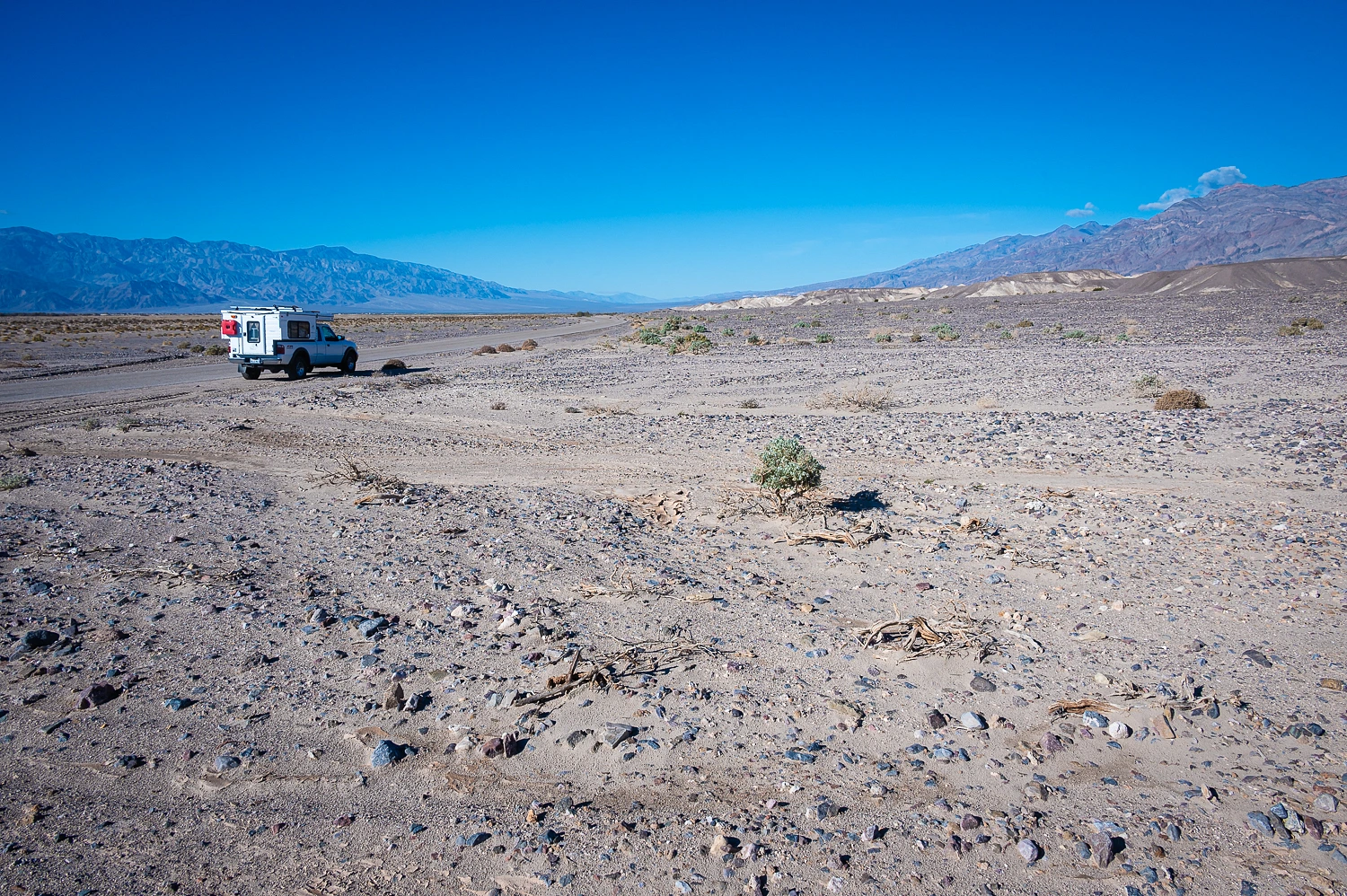please remember you can click on a photo to see a larger version & highlighted text are links to additional information
Please click here for – Part Three
The Journey Home
We had dreary skies with off and on rain Friday. Our thought was to spend the night somewhere in the Mormon Wells area north of Interstate 15, but this area – from our viewpoints – was getting hit hard with rain, so we stayed south and found a great spot on the west side of the Muddy Mountains. Here we stayed free of rain and made a couple of unexpected discoveries that will bring us back to this place.
Our destination for Saturday was Death Valley. A friend, rubberlegs, had sent us a message that the north Death Valley Road had just opened. There was sometime on “the list” we had long wanted to attempt to find along this road.
It was an intaglio, or rock alignment. From the information I found on it, it is of modern origin. One source states it was possibly created by telephone workers in the early 1900’s. It is located on a very active alluvial floodplain, so I doubt it is ancient, especially since the recent floods in Death Valley came very close to carrying it away. It was still fun to find.
Although not profuse, there were a few pockets of Desert Gold (Geraea canescens), one of Death Valley’s noted wildflowers.
We overnighted along Lake Hill Road at one of our favorite “old standby” dispersed campsites. Although not profuse in Death Valley, Panamint Valley was awash with Desert Gold in an incredible bloom.
The desert is full of surprises. The following morning, we found Panamint Valley wet with dew. This vast valley, although not showing water on the surface, is still saturated with water from the recent historic rainfall and floods. It’s not often you can walk out in one of the driest places on earth at dawn and photograph flowers covered with dew drops.
It was a leisurely drive and day for us. We did our grocery
shopping for home in Bishop and I picked up a new pair of Smartwool hiking
socks at Eastside Sports. We shared a Mule Kick Sandwich from Schats across the street in
the park. Julie, very kindly, cut it into small pieces for me to eat with my
fingers, as I’m still unable to bite into food following the surgery.
The night of the 24th was spent in that so decadent hot tub at Benton we had reserved when the Lady discovered, if she stood just right, she had cell service on a high point in Gold Butte above Little Finland.
We arrived home safe and sound in the early afternoon on the 25th. It takes us less than a half hour to empty the truck and camper, gets packs and duffels emptied, and everything put away. The Lady sorted through our dirty clothes and got several loads ready for the wash. Julie put one load in the washer and turned it on. We put our groceries from Bishop away in the kitchen – it sure is convenient to have a fridge in the camper. I discovered the problem when I went to wash my face and shave. We had no water in the house. A ball valve had broken in our main service line during our absence. The neighbors’ stories were – it rained hard for two days with water sheeting down the road. It stopped raining and water was still sheeting down the road. They investigated and called the irrigation district to turn off the water.
We enjoyed an extra night of camping and we fixed the water line the next day. Another day in the mountains, just a little more fun than usual.
We hope you all enjoyed a wonderful Winter Solstice holiday season!













Another great adventure -- thanks so much for posting your stories and your excellent photos!
ReplyDeleteYou've probably already figured this out, but the Moqui marbles are iron concretions -- dissolved iron precipitates around a spherical core of sand and then continues to grow as more iron-rich water flows over the sphere.
The same phenomenon occurs on Mars -- the scientists call them Martian blueberries because they are scattered in the rock like berries in a muffin.